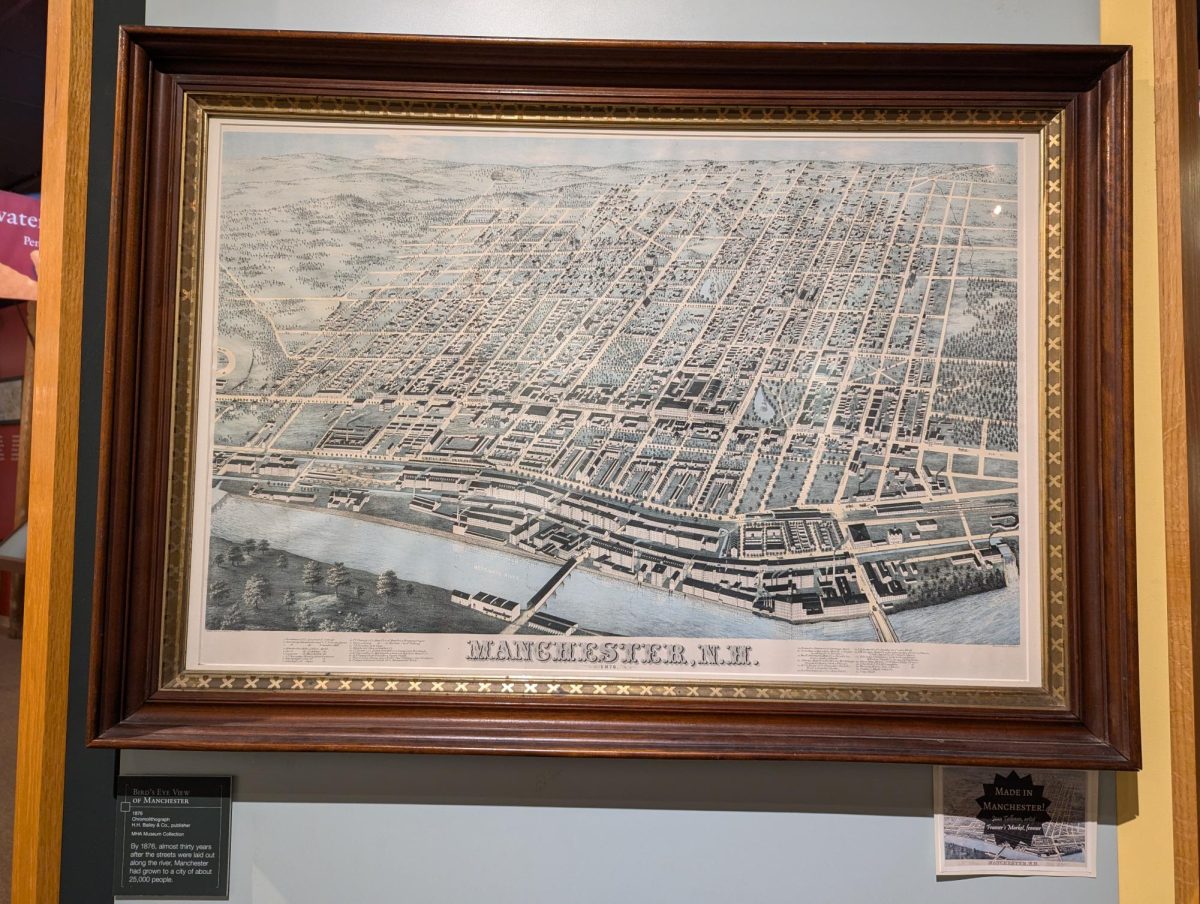This is the Culture of Manchester Series, where the Crier covers different aspects of the city next to Saint A’s. Check out last week’s issue to learn about the Red Arrow.
This week the Series covered the Millyard Museum, a centerpiece of the Manchester Historic Society.
The Millyard Museum celebrates Manchester’s industrious past by highlighting individuals who have been pioneers, entrepreneurs, and business magnates of their time.
Kristy Ellsworth, Museum Educator of the Manchester Historic Association and Millyard Museum, stated, “We recognize the resilience of this community and the passion exhibited by the people who call this place home to truly be the city that never dies. Through our programming, we educate people of all ages about the importance of remembering our past and looking forward to the future.
Key exhibits of the museum included:
(Manchester: From Village to Queen City) – An exhibit explaining that the city of Manchester was held as New Hampshire’s “Queen City” for its textile mills built on the Merrimack River in the 1830s.
(The River, Its Geography and Its People) – A collective of pictures showing the area of the Amoskeag Falls, which is predicted to have been inhabited by humans for roughly 11,000 years.
(Native Cultures) – Was an exhibit demonstrating the first people who arrived in Manchester. After the Europeans arrived in the 1700s, Native Americans, known as the Penacook, established campsites along the Merrimack River.
(First European Settlements on the River) – This exhibit showed the river as a vital source once again for food and transportation. Scott-Irish immigrants from the north of Ireland first settled in the area and named Derryfield, in the 1720s. Most of them were farmers.
(Agrarian Trades and Commerce) – This exhibit showed the nature of colonial economies and trade, being based around agrarian industries. The exhibit displayed recovered tools and equipment used during that time.
(General John Stark) – The soldier, farmer, and mill owner. The exhibit showed the life of John Stark and explained how he became New Hampshire’s famous hero of the Revolutionary War.
(Manchester’s First Mills) – The exhibit showed the technology that harnessed the tremendous power of the Amoskeag Falls and the huge factories that dominated the riverfront.
(The Walled City: The Amoskeag Millyard) – This exhibit was a miniaturized version of Manchester in the post-colonial era, which resembled that of a medieval, walled city.
(The Power of the River) – This exhibit showed the great amount of investment that went into the city to develop textile mills. The exhibit also demonstrated the immense difficulty manufacturing could be in mills.
(Manchester: A Planned City) – Was an exhibit that showed the planning executed before a single brick was laid into the city. Investors of the Amoskeag saw a city of practicality and efficiency in manufacturing. The plan was to create a community, not just a company.
“I think that a community’s history should be important to every person that lives in that community regardless of age. Sometimes history is inconvenient and unfortunate and a little bit ugly. But if we can analyze that and learn from it and grow from it, then we can stop the cycle of mistakes made in the past,” Ellsworth said explaining, “It is also only through an understanding of our history and where we’ve been and what it took to get here that we can truly appreciate all of the modern conveniences that we enjoy today.”
Robert Perreault known for being a Native Speaker for French students on campus is also a long-time member of the Manchester Historical Society. Within the museum, Perreault participated in a documentary discussing the different groups of immigrants who were a part of the mills. When asked about his experience participating in the documentary, he said, “I also spoke about Manchester’s history…I studied both the history of Manchester and the history of the Franco-Americans.”
Perreault has been affiliated with the Manchester Historical Society since 1973, one year after he graduated from Saint Anselm College with a sociology degree. Because of his connection to the Franco-American community and fluency in the language, Perreault was asked to conduct interviews of the former mill workers. Roughly 40% of the Manchester mill workers were French Canadian immigrants.
According to Perreault, his book, “Franco-American Life and Culture in Manchester New Hampshire,” was added to the Conversatio reading portfolio.


